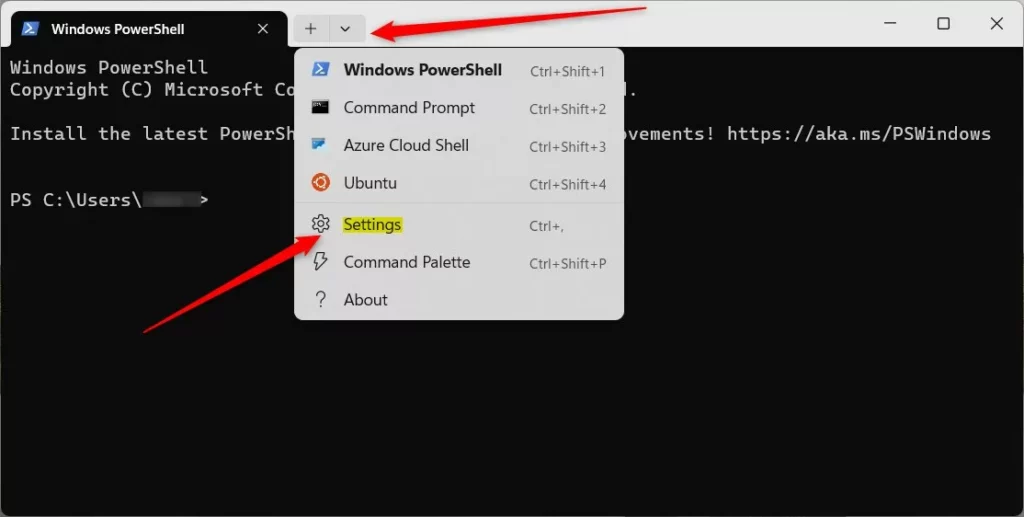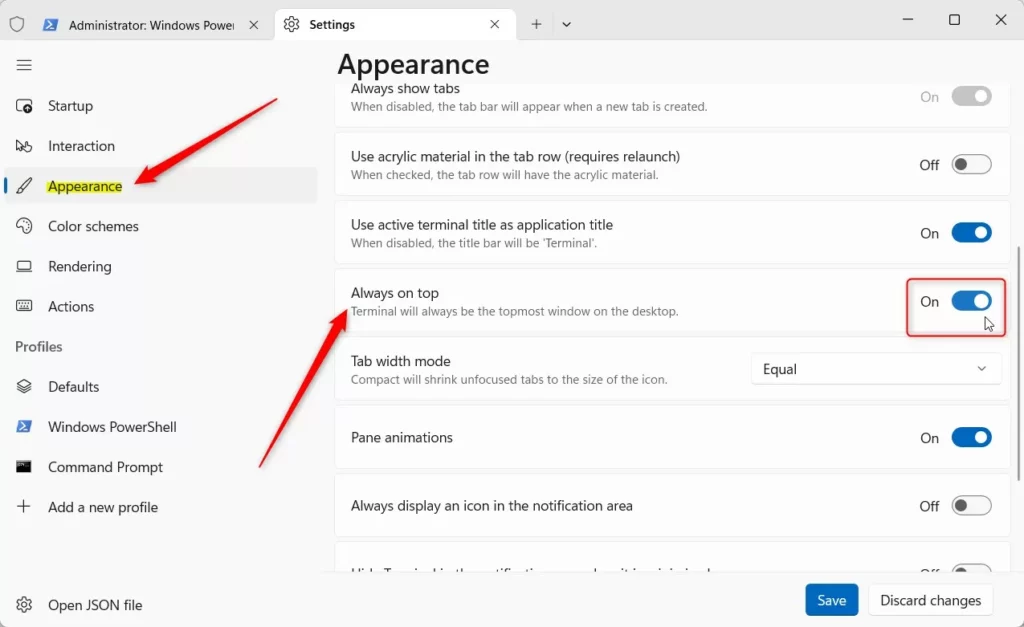This article explains how to enable or disable the Always on Top settings in the Windows Terminal app in Windows 11.
Windows Terminal is a modern host application for the command-line shells, including Command Prompt, Windows PowerShell, and bash (via Windows Subsystem for Linux (WSL)).
Unlike the previous shell apps in Windows, Windows Terminal has many features, including multiple tabs, panes, Unicode and UTF-8 character support, a GPU-accelerated text rendering engine, and theme customization with text, colors, backgrounds, and shortcuts.
With the Windows Terminal app, you can configure a setting known as Always on Top, which launches the app and stays the topmost window on your desktop.
Turn on or off always on top for the Windows Terminal app
As described above, users can configure a Windows Terminal setting to launch the app and stay on top of all other windows on the desktop.
Here’s how to do that.
First, open the Windows Terminal app.
You can do that by clicking on the Start menu and searching for Terminal. Then, under Best match, select and open the Windows Terminal app.

When the Terminal app opens, click the down arrow button on the top bar, and select Settings (Ctrl +,).

On the Settings window, click on the Appearance tab. Then, on the right, select the “Always on top” tile and toggle the button to the On position to enable it.
To disable it, toggle the button back to the Off position.

Click on the Save button to save your changes and exit.
That should do it!
Conclusion:
- Windows Terminal app offers a modern and customizable experience for command-line shells
- Enabling “Always on Top” ensures the app remains the topmost window on your desktop
- Easy steps to configure this setting provide a seamless user experience
- Users can personalize their Windows Terminal app to suit their individual preferences

Leave a Reply